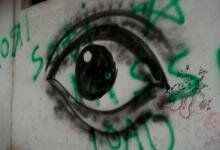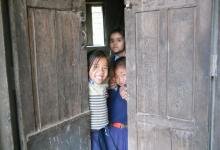We Can Learn from the Japanese
Taiwanese blogger Chensumi’s post about the lessons to be learnt in the way the Japanese reacted to the disaster was one of the most shared posts among the Chinese. Here are some translated excerpts.
Original post in Mandarin is at https://blog.roodo.com/chensumi/archives/15334149.html
... if as people were evacuating to safety, they should help foreigners who may not speak Japanese, and that it would be helpful even if all they could do was ask them in English, ‘Hello, ok?’.
“After the earthquake, I turned my television to NHK (Japanese state television), and my browser onto Yahoo Japan and Twitter. Because I follow many Japanese on Twitter, these few hours gave me a sense of how the Japanese were reacting to the quake disaster.
What I saw on Twitter was shocking. Some celebrities and professional baseball players – with their tens of thousands of followers – became the most effective channels for re-tweets.
The Japanese are known to be fastidious in their quake preparation drills, and those on Twitter who have experienced quakes as well reminded through their tweets about the need to turn off the gas and electricity before going out, what pregnant women needed to be concerned, what to do after pulling out victims from the rubble, and what to bring along as they evacuated.
They even said in their tweets that if as people were evacuating to safety, they should help foreigners who may not speak Japanese, and that it would be helpful even if all they could do was ask them in English, ‘Hello, ok?’.
Some shops in the Sendai area were providing free rice with curry that night. As night fell, the temperature dropped. Since commuters in Tokyo may not be able to return home by subway, and the roads would be congested as well, universities were opening their lecture theatres and halls to allow those stranded to stay the night. Hotels eventually began to join in as well.
It was impressive how these places were able to provide thousands with warm blankets and food. This was the result of preparedness.
Google began to provide maps of the affected areas, NTT allowed the use of public phones there for free, and all the main telcos like NTT, KDDI, Softbank provided message boards where people could post updates of the situation as well as tell loved ones they were safe. Suntory has, since 2005, set up vending machines where people could get drinking water for free during such disasters.
"What the earthquake taught us was how we need to be well-prepared, calm and proactive, when confronted with a natural disaster.”

The blogger, Chensumi, also compared the way the media in Japan and in her native Taiwan covered the earthquake.
“NHK presented the footage with timeliness, calmly, factually and in great detail conveyed accurate news about the tsunami. Even if the voices of some of the reporters and newscasters were trembling, they knew that all Japanese affected and elsewhere in the world were concentrating on the news, and that they had to be calm, because this was their most important source of information. Hence there was no footage of screaming victims or reporters making a scene, just a transmission of information and official announcements, and reminders every couple of minutes for the public to be careful.
NHK was indeed a media outlet that presented itself admirably. I guess, they must have had a lot of preparations when it came to covering disasters, how they should report the news, to be accurate and not stir the public into a panic, worsening what might be considered post-traumatic stress.
As for our (Taiwanese) media, what were they doing? On the same footage, they placed unbearable captions like Shock! Could this be Japan? Tens of thousands of victims rush to the streets and had the newscaster saying, ‘Let's watch the footage to see just how bad it is’ or even exclaiming excitedly ‘This is the first time the (Taiwan) Central Weather Bureau is issuing a tsunami warning, ya!’
Please, newscasters, do not report the disaster as if it were a horror movie.
Please, newscasters, do not report the disaster as if it were a horror movie. And as a last complaint, please when covering disasters and accidents, do not turn your cameras on the victims and their families, filming them as they wail and faint. It is extremely disrespectful and arrogant.
The Japanese media would never broadcast such scenes. Even if the families agreed to be interviewed, they would blur the faces and if there were children, only their backs or shoes would be filmed. This is a form of respect.”


















Post new comment